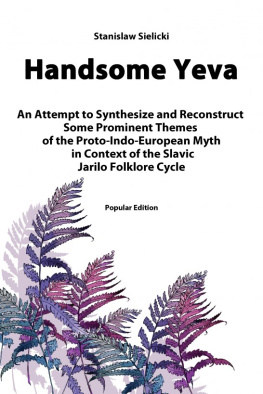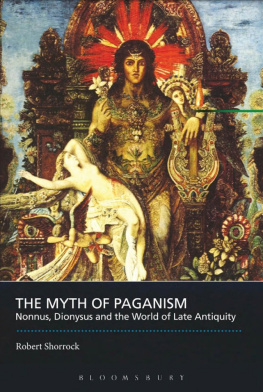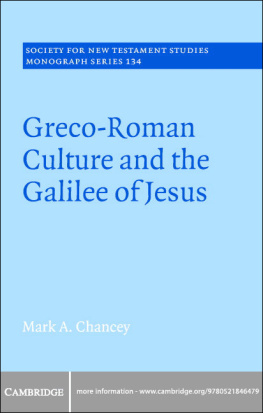Victim of the Muses: Poet as Scapegoat, Warrior, and Hero in Greco-Roman and Indo-European Myth and History
01/16/2014 Washington, DC : Center for Hellenic Studies .
Appendix A: Poetry, Aggression, Ritual
Walter Burkert has pioneered an analysis of ancient Greek ritual that sees its roots in aggression, in biological impulses than can be observed in animalsKonrad Lorenz was especially fascinated by geese. [ In the survey of poets in previous chapters, themes and poetic phenomena that related to ritualized aggression have formed a background for archaic poetry (in particular, Archilochus, our first lyric poet; Homer and Hesiod are shadowy, probably non-historical or quasi-historical figures). A key passage from Burkert deserves full quotation:
Aggressive behavior evokes a highly attentive, excited response. Pretended aggression thus plays a special role in ritual communication. Raising ones hands, waving branches, wielding weapons and torches, stamping the feet while turning from attack to flight, folding the hands or lifting them in supplication, kneeling and prostration: all these are repeated and exaggerated as a demonstration whereby the individual proclaims his membership and place in the community. A rhythm develops from repetition, and auditory signals accompanying the gestures give rise to music and dance. These, too, are primordial forms of human solidarity, but they cannot hide the fact that they grew out of aggressive tensions, with their noise and beating, attack and flight... in ethology, even laughter is thought to originate in an aggressive display of teeth. Gestures of disgust or purification are not far removed from the impulses of aggression and destruction. Some of these ritual gestures can be traced with certainty to the primates, from waving branches and rhythmic drumming to phallic display and raising the hand in supplication. [
Parallels with poets and poems we have examined will be obvious:
- Satire and laughter are obviously related; and laughter, perhaps, originated in aggressive display of teeth. Satire is, in a way, such a display; and we remember numerous comparisons of satirical poetry to fangs. Pindar, in his reference to Archilochus, writes that he, Pindar, on the other hand, will flee the violent bite of evil speech. [
- A rhythm develops from repetition, and auditory signals accompanying the gestures give rise to music and dance. Greek poetry was originally closely connected with music and dance: Homer was sung, and in Sapphos day, lyric was still tightly connected with music. Of course, the chorus tradition, extending from the choral lyric to dramatic chorus, never lost its musical and dancing aspects. Even poetry that lost its musical adjunct kept its metrical, rhythmic nature.
- Aggressive tensions, with their noise and beating, attack and flight. Once again, one thinks of the haunting rhythmic nature of poetry. [
- Attack and flight. Satirical poetry was often explicitly attack, but more often the poet portrayed it as counterattack. [
- Phallic display. One thinks immediately of Archilochus, who offended through his obscene, probably phallic poetry. When he is punished, his tormentors [became weak] in the genitals. The closest parallel to this story is a myth in which the Athenians, after dishonoring Dionysus, suffer a plague in the genitals. They institute phallic cult to Dionysus to gain an alleviation of the curse. [
- Gestures of disgust. Satirical poetry can often be a verbal gesture of disgust.
- Gestures of purification. We think of the association of pharmakos and purification. Expelling the scapegoat purifies the city. The poet, when he expels an enemy through poetry, is a purifier; and his enemy, expelling the poet, thinks of himself as purifier. There is ambiguity, depending on whom one considers just, the poet or his enemy. And there is ambiguity in the purifying nature of the expelled dirt; in human terms, the human dirt can be heroic in his or her departure. But in any event, these phenomena are not far removed from the impulses of aggression and destruction.
In addition, as we have seen, Greco-Roman ritual included overtly satirical elements. The cult of Demeter in particular was connected with ritual abuse. A famous example is the
gephurismos in the Eleusinian mysteries, the mockery of prominent citizens in a procession as they passed over a bridge. [ Another Eleusinian connection to ritual abuse is Iambe, who coaxes the grieving Demeter into laughter through her jests. Demeter grieves for her stolen daughter,
.
Until when with jokes, the wise Iambe, greatly mocking, turned the holy mistress to smile and laugh and have a cheerful soul.
Hymn to Demeter 202204 [
One immediately thinks of the word
iambos, the meter of satirical poets, a word often used with the meaning satire. In the case of Iambes kind mockery, laughter may be a symbol of death and rebirth.
Archaic Greek poetry was, in turn, often closely connected with cult. We remember that Paros is listed immediately after Eleusis as a cult center for Demeter in the Homeric Hymn to Demeter (491), and that Archilochus family had a connection with the cult of Demeter. [
The scholiastic accounts of the origins of comedy link it with farmers, those who would be involved with agricultural work, the cultivation of Demeters gifts. Carlos Miralles and Jaume Prtulas link the tendency for poetic initiations to take place in agricultural or pastoral settings (Hesiod, Archilochus; compare Aeschylus, Epimenides) with agricultural ritual. [
Fescennine abuse offers a Roman parallel. Once again, farmers are involved, and there is ritual offered to a Demeter-like figure, Earth-mother Tellus; there is also a sacrifice of a pig, which reminds us again of Demeter and Eleusis. [ Horace wrote:
The farmers of old, a sturdy folk with simple wealth, when, after harvesting the grain, they sought relief at holiday time for the body, as well as for the soul, which bore its toils in hope of the end, together with slaves and faithful wife, partners of their labors, used to propitiate Earth with swine, Silvanus with milk, and the Genius who is ever mindful of the shortness of life with flowers and wine. Through this custom came into use Fescennine licence [Fescennina licentia], [ They who were bitten by tooth that drew blood [cruento dente lacessiti] were stung to the quick, and even those untouched felt concern for the common cause; and at last a law was carried with a penalty, forbidding the portayal of any abusive strain [







